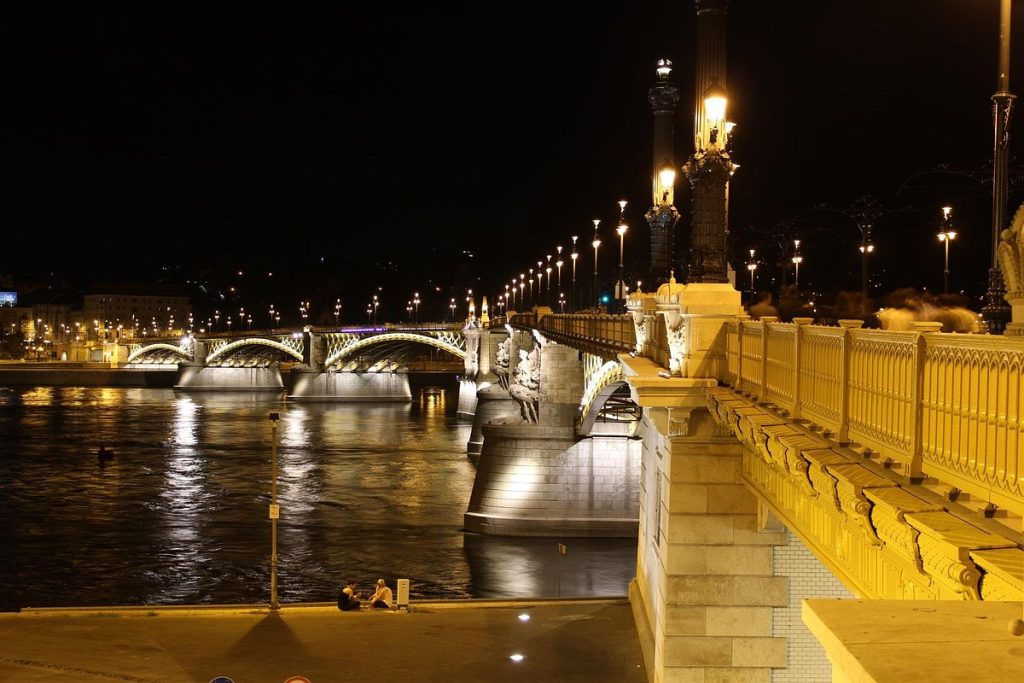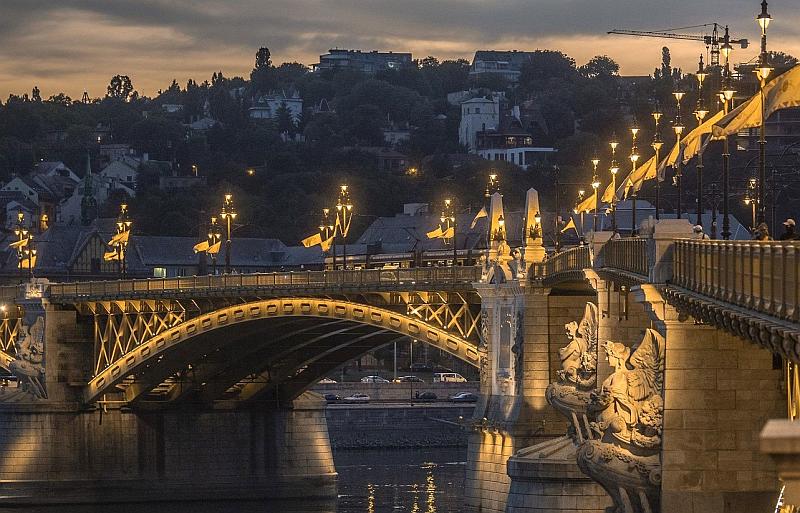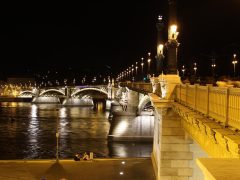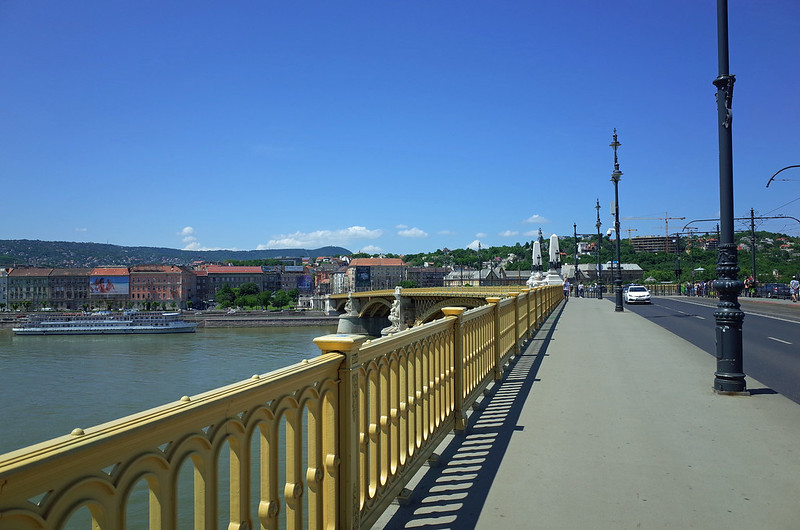Margaret Bridge: A Graceful Link Across the Danube
Margaret Bridge, a pivotal structure in Budapest’s cityscape, offers more than just a passage across the Danube; it is a testament to historical ingenuity and architectural elegance. As a fan of Budapest’s architectural landmarks, I’m here to guide you through the history and beauty of this iconic bridge, a structure that seamlessly blends functionality and aesthetic appeal.
A Historical Link Across the Danube
Constructed between 1872 and 1876, Margaret Bridge was one of Budapest’s earliest bridges. Named after the daughter of King Béla IV, it was built to alleviate traffic on the Chain Bridge and fostered the development of northern Pest and Buda’s main routes. French engineer Ernest Goüin’s visionary design won an international competition, creating this 607.12-meter-long and 16.84-meter-wide marvel.
An Architectural Wonder with a Unique Twist
Margaret Bridge’s most distinctive feature is its axis, which twists at a 30-degree angle at the center. This ingenious design includes an adjoining winged bridge leading to Margaret Island, making it an architectural curiosity and a must-visit for enthusiasts.
Resilience and Restoration
Despite suffering severe damage during WWII, Margaret Bridge’s reconstruction in 1948 and subsequent renovations have restored its grandeur. The significant makeover from 2009 to 2011 reinstated its original charm, and today, it serves not only vehicular traffic but also pedestrians and cyclists, complete with a bike tunnel.
Award-Winning Restoration and Modern Additions
The bridge’s restoration earned accolades, including a 2012 European Steel Design Award, highlighting its architectural significance. The replenishment of missing statues, including the notable Hercules statue, has further enhanced its historical value.
A Gateway to Margaret Island and Panoramic Views
The winged bridge to Margaret Island opened in 1900 and transformed access to this serene urban retreat. Today, Margaret Bridge offers stunning views of the Danube and the cityscape. Photographers and visitors alike are captivated by the unique perspectives it offers of both Buda and Pest, especially when illuminated at night.
A Must-Visit Destination in Budapest
Visiting Margaret Bridge provides a chance to experience Budapest’s history while enjoying panoramic views and easy access to the tranquil Margaret Island. The bridge’s evening illumination offers a magical spectacle, creating an unforgettable experience for all who walk its span.
Did you know about the Margaret Bridge?
Margaret Bridge, known as Margit híd in Hungarian, is another significant bridge in Budapest, Hungary, with its unique history and characteristics. Here are some key facts about Margaret Bridge:
- Location and Purpose: Margaret Bridge connects Buda and Pest, the two sides of Budapest, traversing the Danube River. Uniquely, it also connects to Margaret Island (Margitsziget), a peaceful public park and recreational area in the middle of the Danube.
- Historical Background: The bridge was named after Saint Margaret, the daughter of King Béla IV. It was designed and constructed under the supervision of French engineer Ernest Goüin. Construction began in 1872 and was completed in 1876.
- Architectural Design: Margaret Bridge is a three-way bridge, a rare design feature. The bridge’s main section, between Buda and Pest, is straight, but it has an extension that branches off at a nearly 90-degree angle to Margaret Island. It was one of the earliest examples of a fixed iron bridge worldwide.
- Dimensions: The main span of the bridge measures approximately 350 meters (1,150 feet), and the part connecting to Margaret Island is about 100 meters (330 feet) long. It’s one of the prominent bridges on the Danube in Budapest.
- Destruction and Reconstruction: Like the Chain Bridge, Margaret Bridge was destroyed during World War II. It was rebuilt and reopened in 1948, with efforts to retain its original design and structure.
- Recent Renovations: Between 2009 and 2011, the bridge underwent a comprehensive reconstruction. This renovation restored its historical appearance while ensuring modern safety standards.
- Cultural Significance: Margaret Bridge is a transportation route and a significant cultural landmark. The bridge provides beautiful views of the Danube, Budapest’s skyline, and the entrance to Margaret Island, making it a popular spot for locals and tourists.
- Modern Usage: Today, Margaret Bridge serves as an important artery for vehicle, tram, and pedestrian traffic, seamlessly integrating into Budapest’s urban landscape. Its connection to Margaret Island makes it a popular starting point for leisure activities.
The blend of historical significance, architectural uniqueness, and practical utility make Margaret Bridge a distinctive and cherished part of Budapest’s cityscape.
Tip: For a holistic experience, consider visiting during the evening hours when the bridge lights up, offering a magical view.
In conclusion, Margaret Bridge is not just a functional structure; it’s a journey through Budapest’s history, an architectural feat, and a vantage point for some of the city’s most picturesque views. Its blend of historical significance, unique design, and modern functionality makes it an essential part of any Budapest itinerary, offering visitors a glimpse into the city’s past while enjoying its present beauty. As you cross Margaret Bridge, you’re not just traversing the Danube but walking through a chapter of Budapest’s rich and vibrant story.





